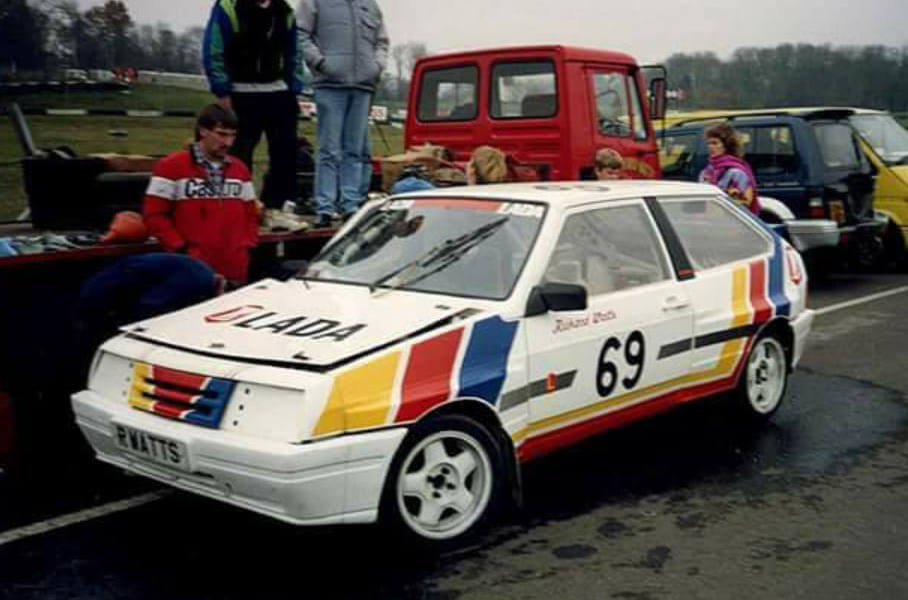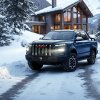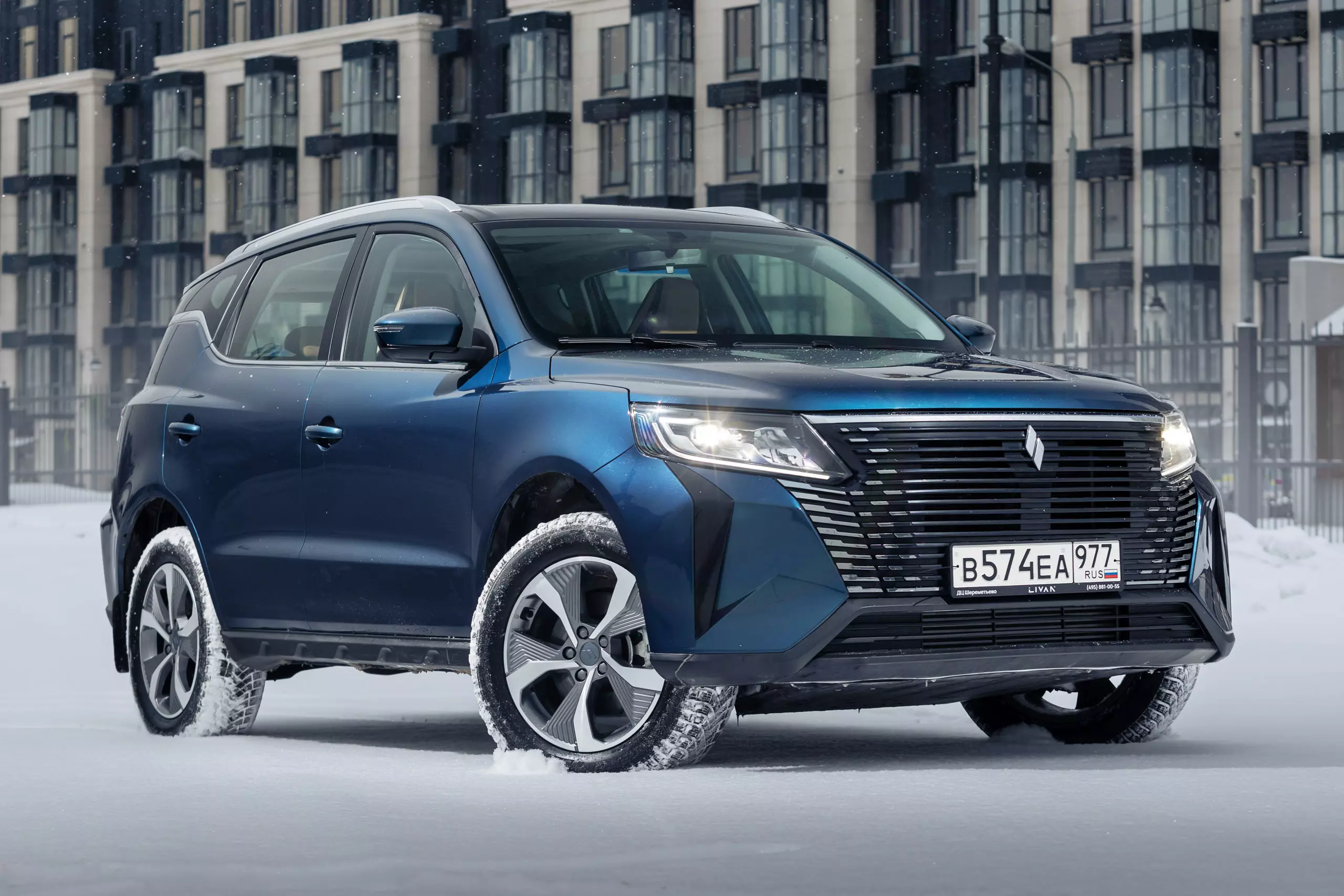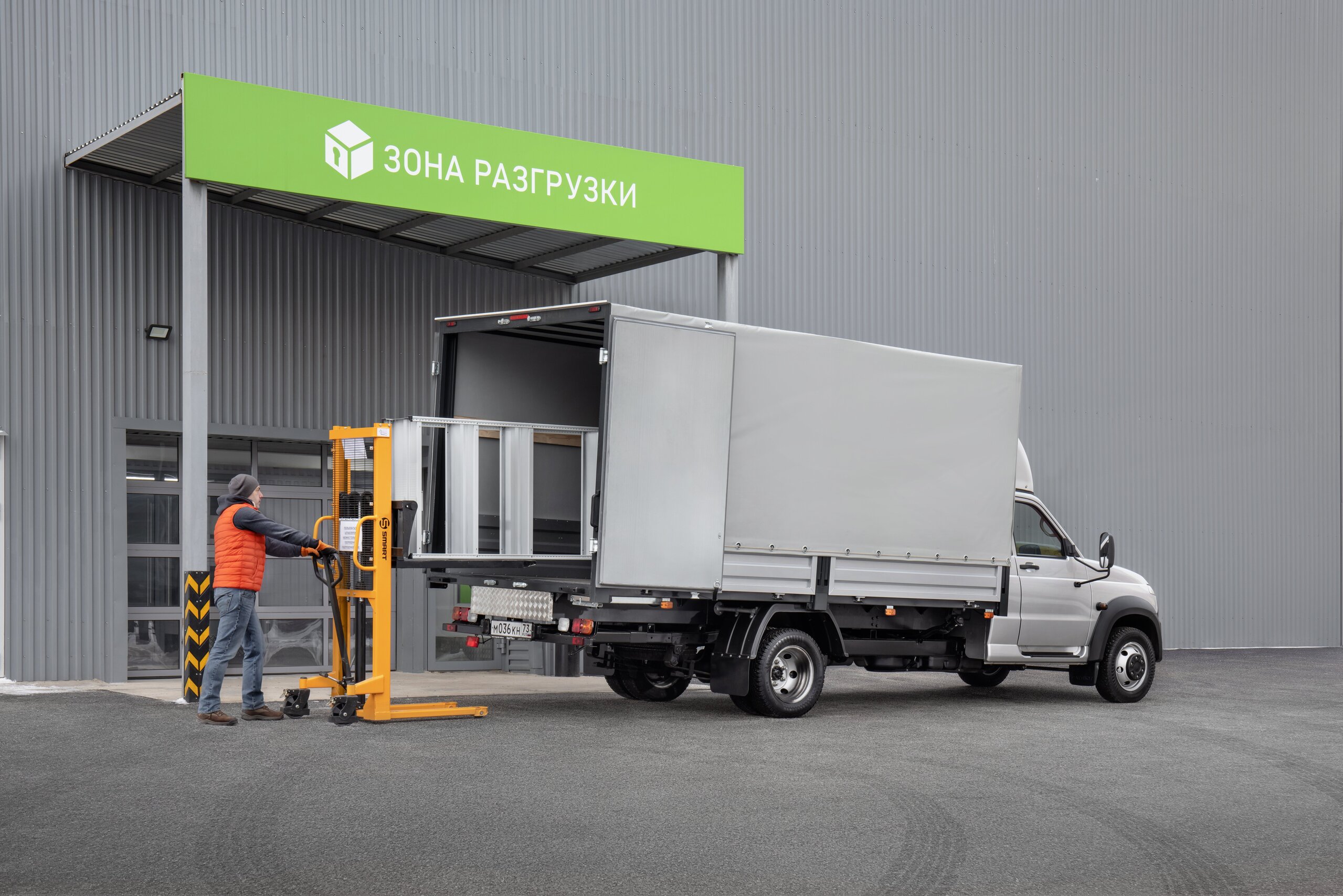Motor editor Vasily Kostin has long been interested in the history of domestic cars in foreign motorsport. In the past, we had his articles about the rally “Lada” with the Honda motor and about the rear -wheel drive “eight” – both cars were built in Northern Ireland. And this time, he excavated the little-known story of the rally-pertinated “Samara” from England. The car is serious, there is something to read about!
… I can’t do anything with myself: Soviet cars abroad have a special attractiveness for me. Firstly, because the usual recognizable images find themselves in an unusual environment-what do you say about the rally “Samara” in Uruguayan pampas or the right-handed raid “Niva” in Australia? Secondly, they are often accompanied by amazing human stories: for example, they heard about the English racer of the adventurer Tony Lanfranki, who managed to win the prestigious body championship in the Muscovite? Or the technical filling is of interest: sometimes cosmic-extended, as on the raid prototype Lada Samara T3 with the Porsche engine, sometimes amazing with the ingenuity of the hand-lonely mechanic, as in the case of the rear-wheel drive Samara from Ireland.
The rear-wheel drive “Samara” from Ireland Lada with the Porsche motor, look at the 285-horsepower rally “Zhiguli” from Northern Ireland, the Soviet “Niva” reached the finish line “Dakar” in Saudi Arabia, the French sell the body of the Lada Niva rally more than two new Niva Legend
And Lada Samara, about which I am writing now, is interesting at once for all three reasons at the same time!
Until now, I was sure that I was well aware of the sports biography of the VAZ cars in the British Islands – at least in general terms. Mass and very affordable rally Lada Challenge monocum on rear -wheel drive Zhiguli; The sophisticated Lada VFTS, on which the Lada Cars UK engineer Jeff Warcap performed; somewhat perfectly charged “Samar” of group A prepared by a local importer for rally in the late 80s; And the fast ring “Samara”, on which in the championship of the BRSCC Super Road Saloons championship, the racer Roger Turner went very successfully. This, in general, is all.
And so, once I accidentally stumble upon a tiny photo of “eight” – with a right -wing steering wheel, with a security frame, expanded arches in the spirit of Lancia delta Integrale, in a stylish white -raged stripes … signed as “Lada Samara 4 × 4”! According to the surroundings and comments, it is immediately clear: this is a rally-cross, filmed somewhere in England.
This little photo intrigued me by launching work on the article that you are now reading
Social networks
We must investigate … Yes, the trouble is-there are very few systematized information on the rally cross! About the competitions of sportsmen or racies of the Grand Prix on the Internet twenty years ago, there were quite detailed databases. The global rally is perfectly documented, and even but there are plenty of the national information championships. But the rally-cross-in a sense, provincial discipline (while the struggle there is very hot, and the audience adore this sport). So I could only count on notes in old English magazines and memories of contemporaries …
With a sin in half, it was possible to find out that the young racer, amateur Richard Watts, performed at the Eight in the early 90s. Obviously, very fast: in 1994, he became the champion of the British rally-crap series BTRDA (this is a “club” series, unlike a more prestigious British rally championship in which Watts also performed).
Supercars, due to the iron curtain, sweat, tears and the happiness of real motorsport together with LADA are represented by racing Lada ISKRA
Information, frankly, is spent … But then I was lucky to go to a person who served this “Samara” on the races. David Playfort worked for seven years as a service manager for one of the Lada dealers in Yorkshire. Once-it was in 1992-Watts drove for advice on the brakes: he wanted to increase their effectiveness. In the fall of the same year, David went to see the competition … And in the end he began to engage in the racing “eight”. Fortunately, he already had some sports experience-he drove a navigator on the rally and prepared cars for Autograss competitions (as the British calls the local variety of carriers). He later worked as a quality engineer at Lada Cars UK, a VAZ importer in the UK.
All further details are from the words of David. He remembered that Richard Watts began his performances somewhere in 1990, when he was about twenty. At first-driving the Ford Escort Twin Cam, but already in the 92nd he moved to Lada.
Firstly, in his native Bridlington, the Vazovsky import center with a warehouse of spare parts, the staff of competent techies and the experience of refinement of rally Samar was located for him. Secondly, the base machine itself was very inexpensive. Finally, in Lada Cars UK agreed to allocate a couple of spare bodies and a small supply of details for free. It all matters when you go “for your own”: the family has Watts, and still has a good business – sandy and gravel careers, but … its possibilities are far from endless.
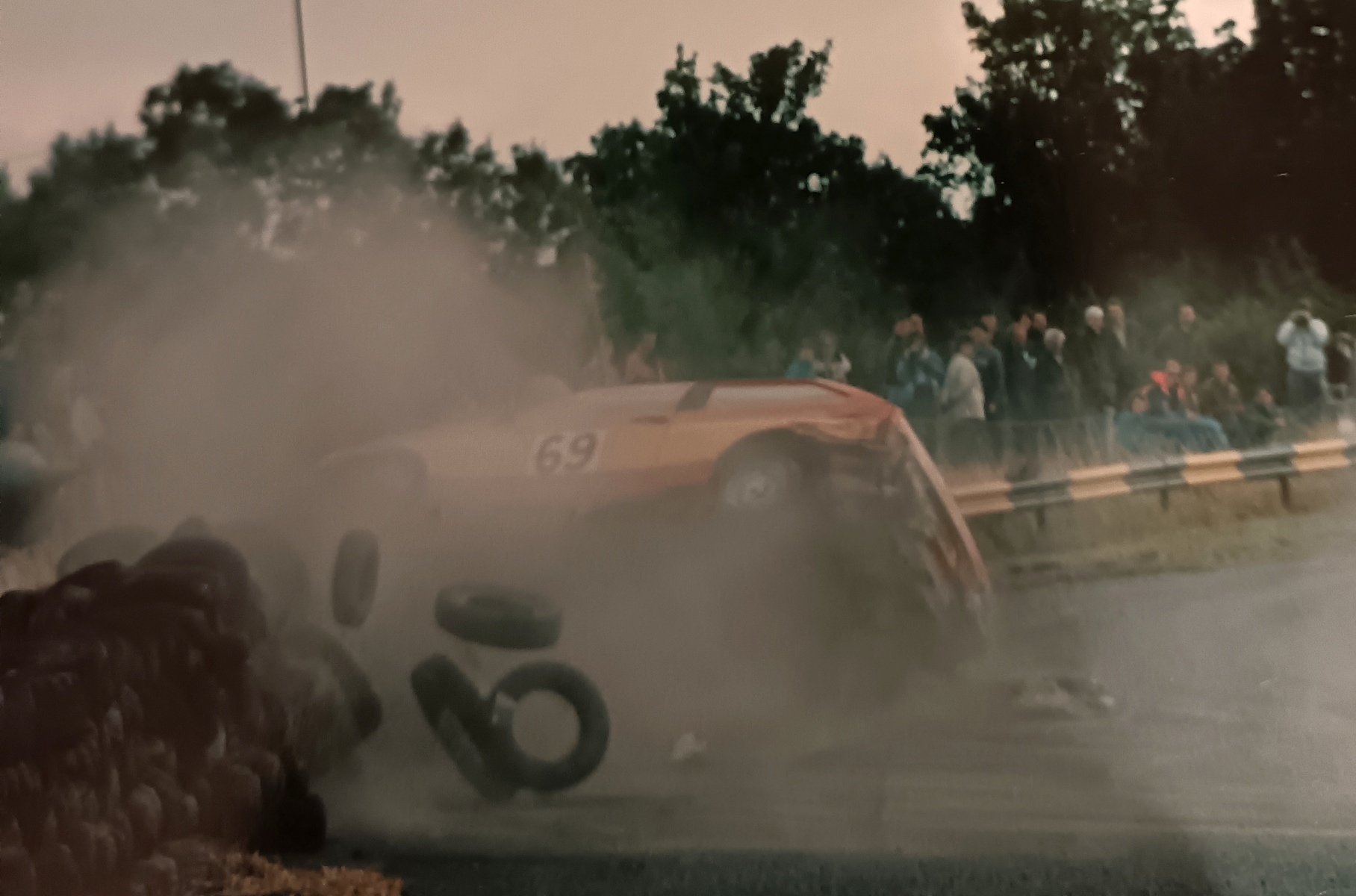 Photos from the traditional Battle of Britain race in Croft in September ninety -second, where Richard Watts turned his “Samara”. Here is how my interlocutor recalls this: “I came there just to cheer up for Richard. After the coup, he returned to the boxes and says – that’s all, we are going home, I broke the car. I answer – well, no, we will repair! They restored the car, he made his way to the super final and took the second place in the absolute standings, among senior categories. After this, he was awarded the Racer of the Day.
Photos from the traditional Battle of Britain race in Croft in September ninety -second, where Richard Watts turned his “Samara”. Here is how my interlocutor recalls this: “I came there just to cheer up for Richard. After the coup, he returned to the boxes and says – that’s all, we are going home, I broke the car. I answer – well, no, we will repair! They restored the car, he made his way to the super final and took the second place in the absolute standings, among senior categories. After this, he was awarded the Racer of the Day.
David Playforth Archive 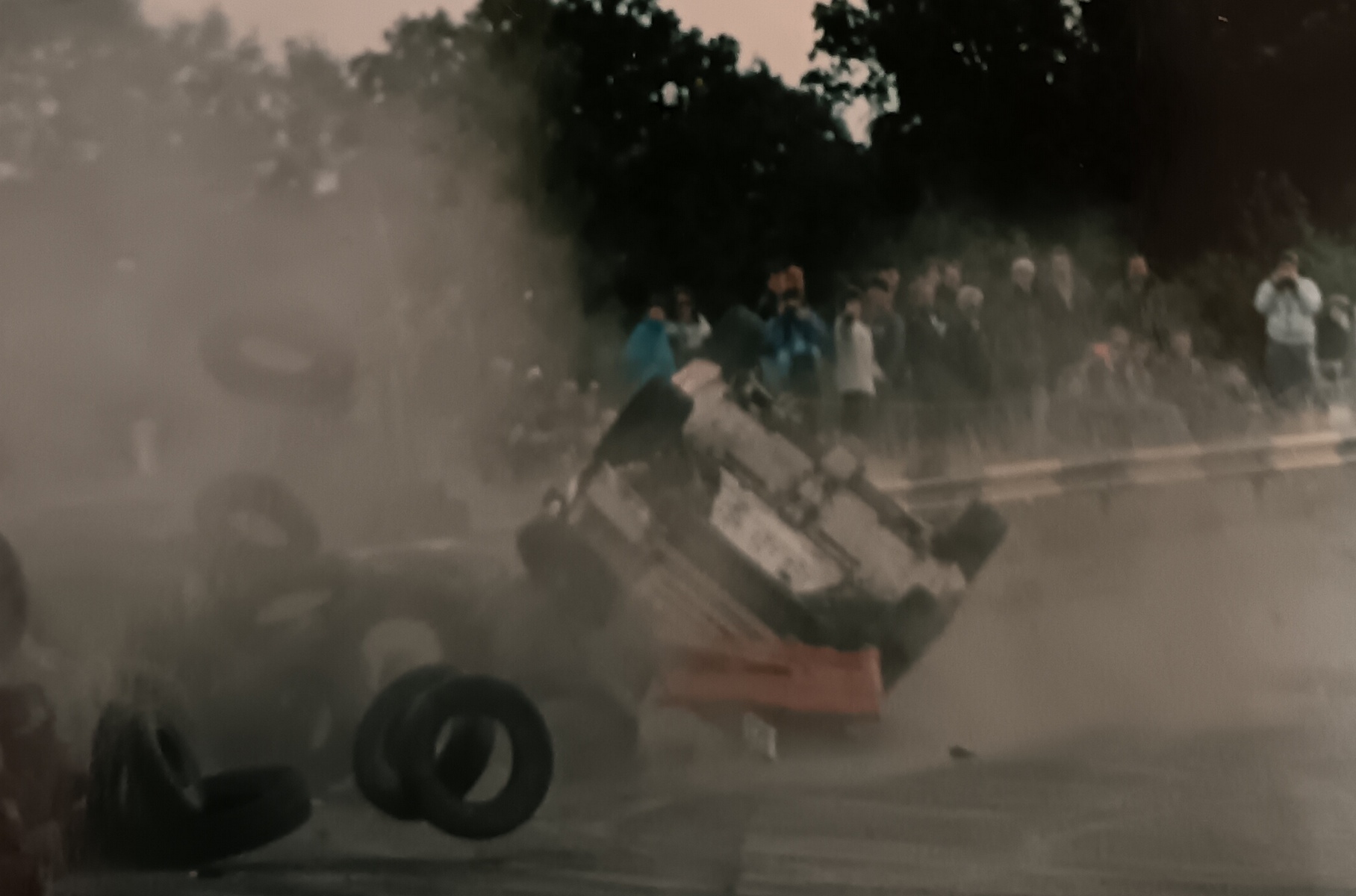 Photos from the traditional Battle of Britain race in Croft in September ninety -second, where Richard Watts turned his “Samara”. Here is how my interlocutor recalls this: “I came there just to cheer up for Richard. After the coup, he returned to the boxes and says – that’s all, we are going home, I broke the car. I answer – well, no, we will repair! They restored the car, he made his way to the super final and took the second place in the absolute standings, among senior categories. After this, he was awarded the Racer of the Day.
Photos from the traditional Battle of Britain race in Croft in September ninety -second, where Richard Watts turned his “Samara”. Here is how my interlocutor recalls this: “I came there just to cheer up for Richard. After the coup, he returned to the boxes and says – that’s all, we are going home, I broke the car. I answer – well, no, we will repair! They restored the car, he made his way to the super final and took the second place in the absolute standings, among senior categories. After this, he was awarded the Racer of the Day.
David Playforth Archive 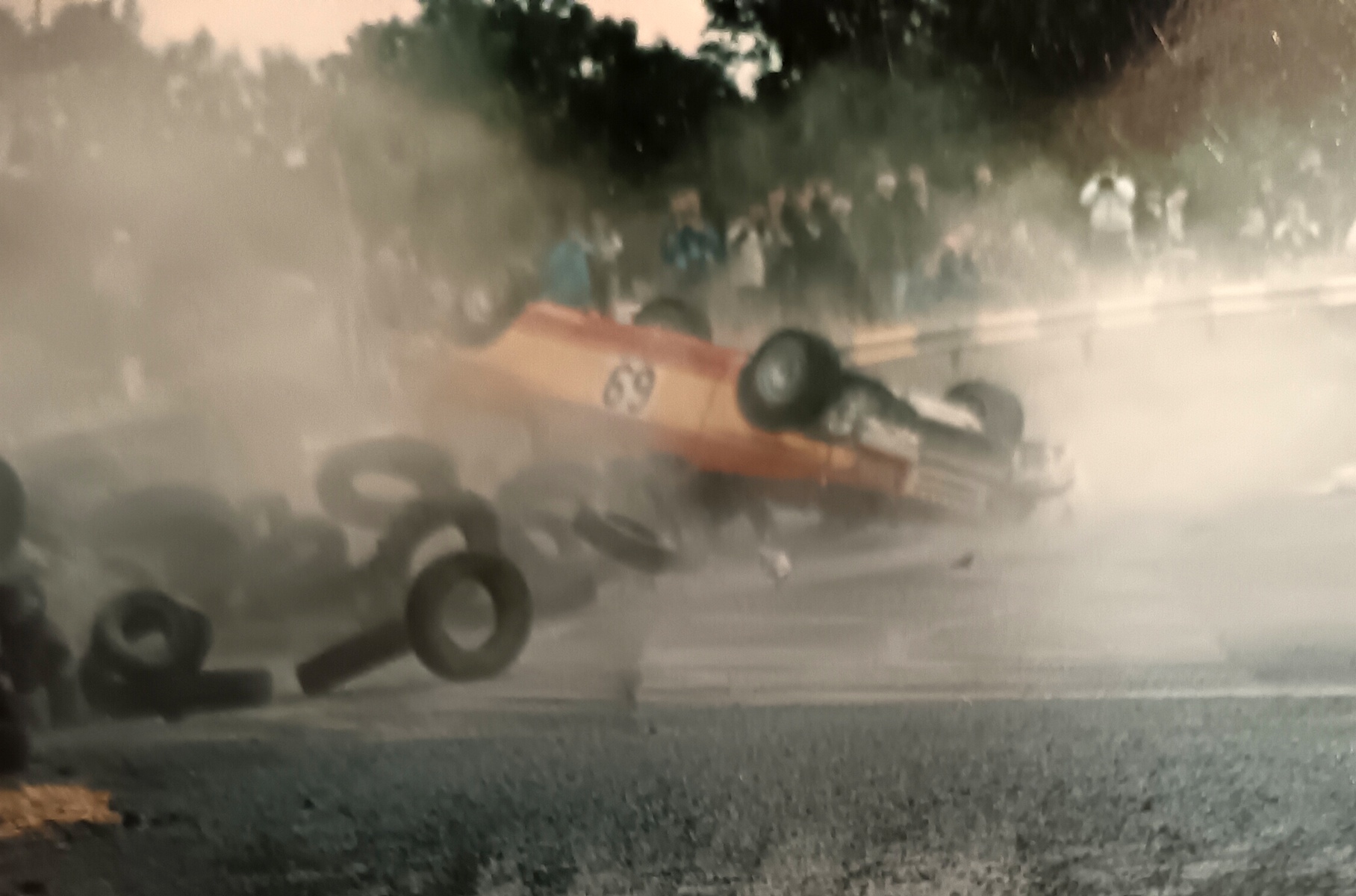 Photos from the traditional Battle of Britain race in Croft in September ninety -second, where Richard Watts turned his “Samara”. Here is how my interlocutor recalls this: “I came there just to cheer up for Richard. After the coup, he returned to the boxes and says – that’s all, we are going home, I broke the car. I answer – well, no, we will repair! They restored the car, he made his way to the super final and took the second place in the absolute standings, among senior categories. After this, he was awarded the Racer of the Day.
Photos from the traditional Battle of Britain race in Croft in September ninety -second, where Richard Watts turned his “Samara”. Here is how my interlocutor recalls this: “I came there just to cheer up for Richard. After the coup, he returned to the boxes and says – that’s all, we are going home, I broke the car. I answer – well, no, we will repair! They restored the car, he made his way to the super final and took the second place in the absolute standings, among senior categories. After this, he was awarded the Racer of the Day.
David Playforth Archive 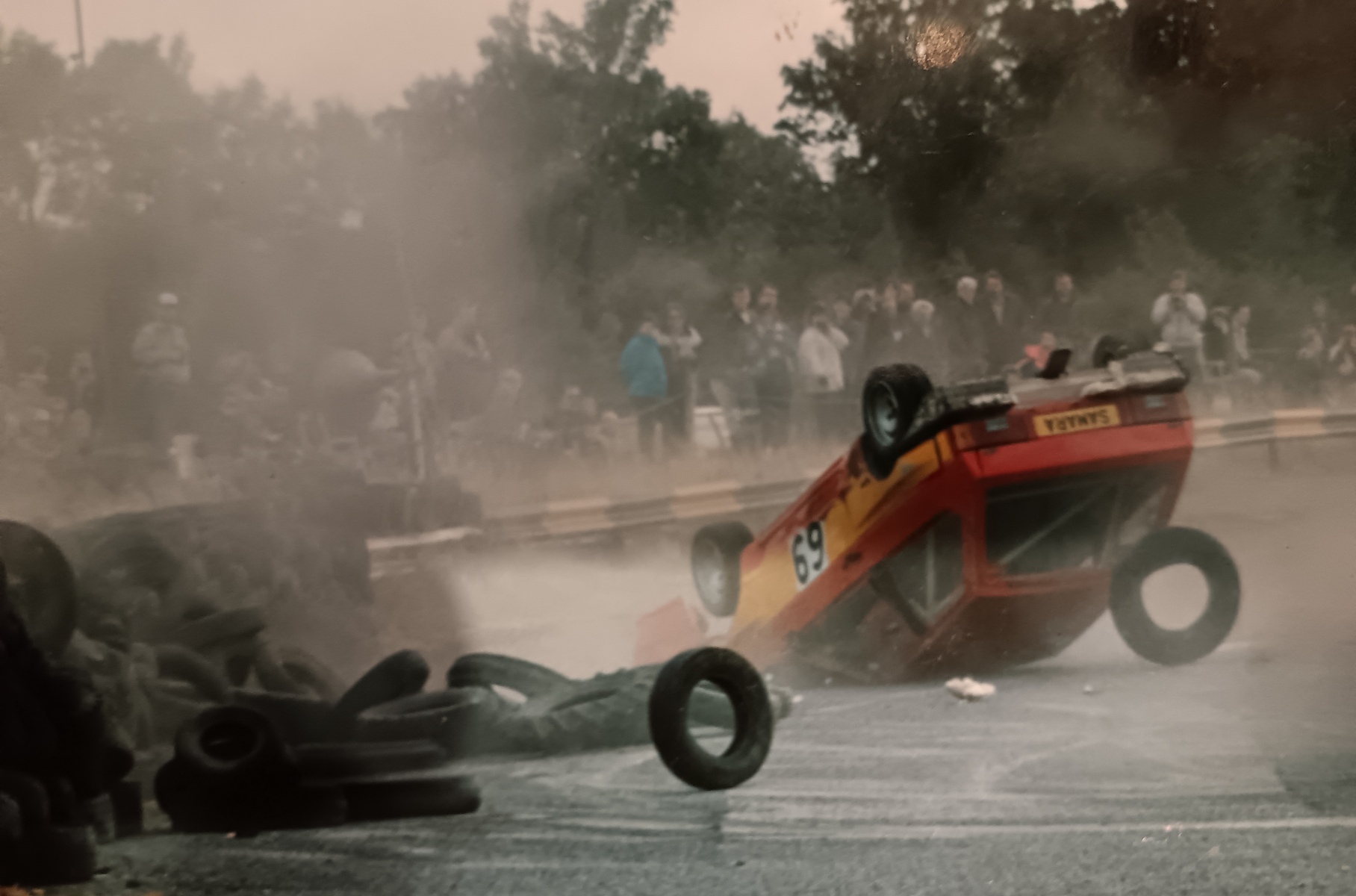 Photos from the traditional Battle of Britain race in Croft in September ninety -second, where Richard Watts turned his “Samara”. Here is how my interlocutor recalls this: “I came there just to cheer up for Richard. After the coup, he returned to the boxes and says – that’s all, we are going home, I broke the car. I answer – well, no, we will repair! They restored the car, he made his way to the super final and took the second place in the absolute standings, among senior categories. After this, he was awarded the Racer of the Day.
Photos from the traditional Battle of Britain race in Croft in September ninety -second, where Richard Watts turned his “Samara”. Here is how my interlocutor recalls this: “I came there just to cheer up for Richard. After the coup, he returned to the boxes and says – that’s all, we are going home, I broke the car. I answer – well, no, we will repair! They restored the car, he made his way to the super final and took the second place in the absolute standings, among senior categories. After this, he was awarded the Racer of the Day.
David Playforth Archive
Of the four grades in the then Eight Championship, she fell into the youngest: a drive to one axis, a motor up to 1600 cubic centimeters. At first, everything was quite modest – the car was built on their own, the VAZ motor 1.5 “charged” in various small workshops. But the young man turned out to be a capable pilot, and even on such a modest technique he imposed the struggle of the owners of more powerful cars. It remained only to add strong technical support …
The next “Samara” was already being built seriously – the case was entrusted with a small but very respected company Spec Fab. At the exit, a serious racing shell turned out. The mass of “eight” brought to 750 kilograms! For the sake of relief, the entire back, in fact, was collected on a spatial frame – and the floors were cut out, replacing them with a thin sheet of aluminum. The hood and expanders of arches were excited of fiberglass. And, of course, the body was carefully processed, removing all the mastic and sound insulation.
The front suspension as a whole repeated the rally Samara group “A”-ordinary MacPherson, but with enhanced levers and spherical hinges instead of silent blocks. But in the back, instead of a standard half-dependent beam, they made an original independent scheme-on spherical hinges, with adjusting the angles of the installation, very open-and-and-handed.
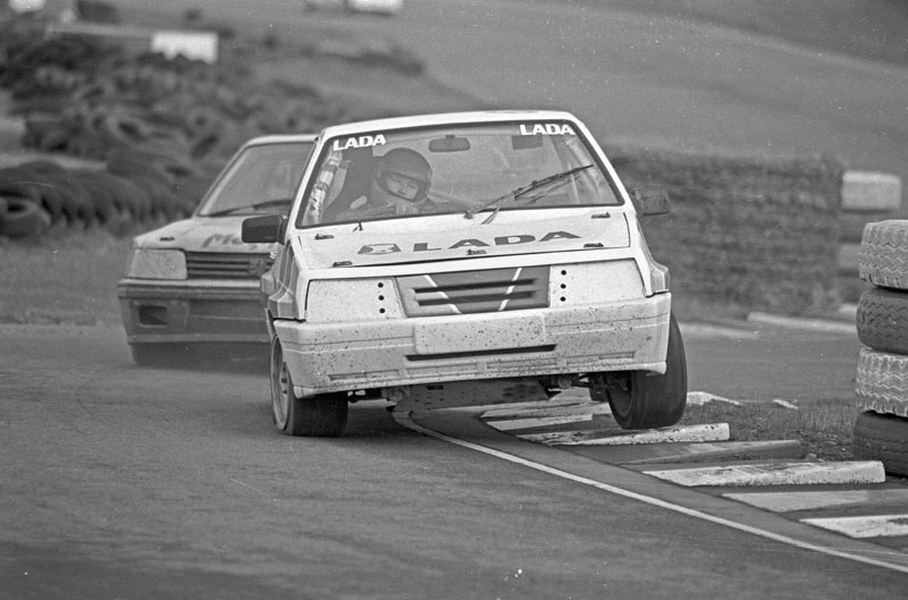 1992: Richard Watts attacks the Langbar highway in North Yorkshire (later it was renamed the Avtodr Tisade, but the rally-Cross has not been held there for a long time)
1992: Richard Watts attacks the Langbar highway in North Yorkshire (later it was renamed the Avtodr Tisade, but the rally-Cross has not been held there for a long time)
Tim Whittington / [RallyCrossWorld.com](https://rallycrossworld.com/)
Richard Longman was engaged in the engine. In the motorsport of those years, it was a name: he combined his performances with engineering work-in the 70s he prepared engines for Mini, switched to units for Ford Escort in the 80s (on which he became the BTCC series champion in his class), built the mighty V12 for Lemanovsky prototypes of the group C, and in the 90s he was engaged in engines Peugeot for the factory program in the ring class “Super Turism”.
The modest Vazovsky eight -clad received a lightweight and exit crankshaft, a head with enlarged valves, a piston from the Lotus Twin Cam engine, the Lumenition ignition system, a couple of Weber horizontal carburetors and the tuned exhaust system of Tony Law. Depending on the settings of the ignition system, the engine “spun” to 8800 or 9000 rpm, and at the stand gave out 150 horsepower from the wheels. (David mentions an assessment in 190 forces on a flywheel, but it seems to me high). In fairness, it must be said: the 1.5-liter engine did not reach 100 “cubes” to the upper boundary of the class, and the 16-valve heads were already in the course-so even the prepared Vazovsky eight-clad was inferior to class leaders.
Of course, the race gearbox: in the standard Vazovsky corps, the filling of Quaife (straight-toothed gears, cam clutch of inclusions) and a trans-locking Tran-X disk, a cam clutch was mounted. There was no full -wheel drive, which I mentioned at the beginning of the article, was not: an unknown author on the Internet was mistaken. The gear rates were specially selected for a rally cross: on the first, the car accelerated as much as 77 km/h-so that at the start from the place not to waste time on switching. And the maximum speed was about 170 km/h. Large wheels of 15 ″ ″ 8 with AVON diagonal slides were used – without an amplifier in the steering mechanism, it was difficult to control the machine at low speeds!
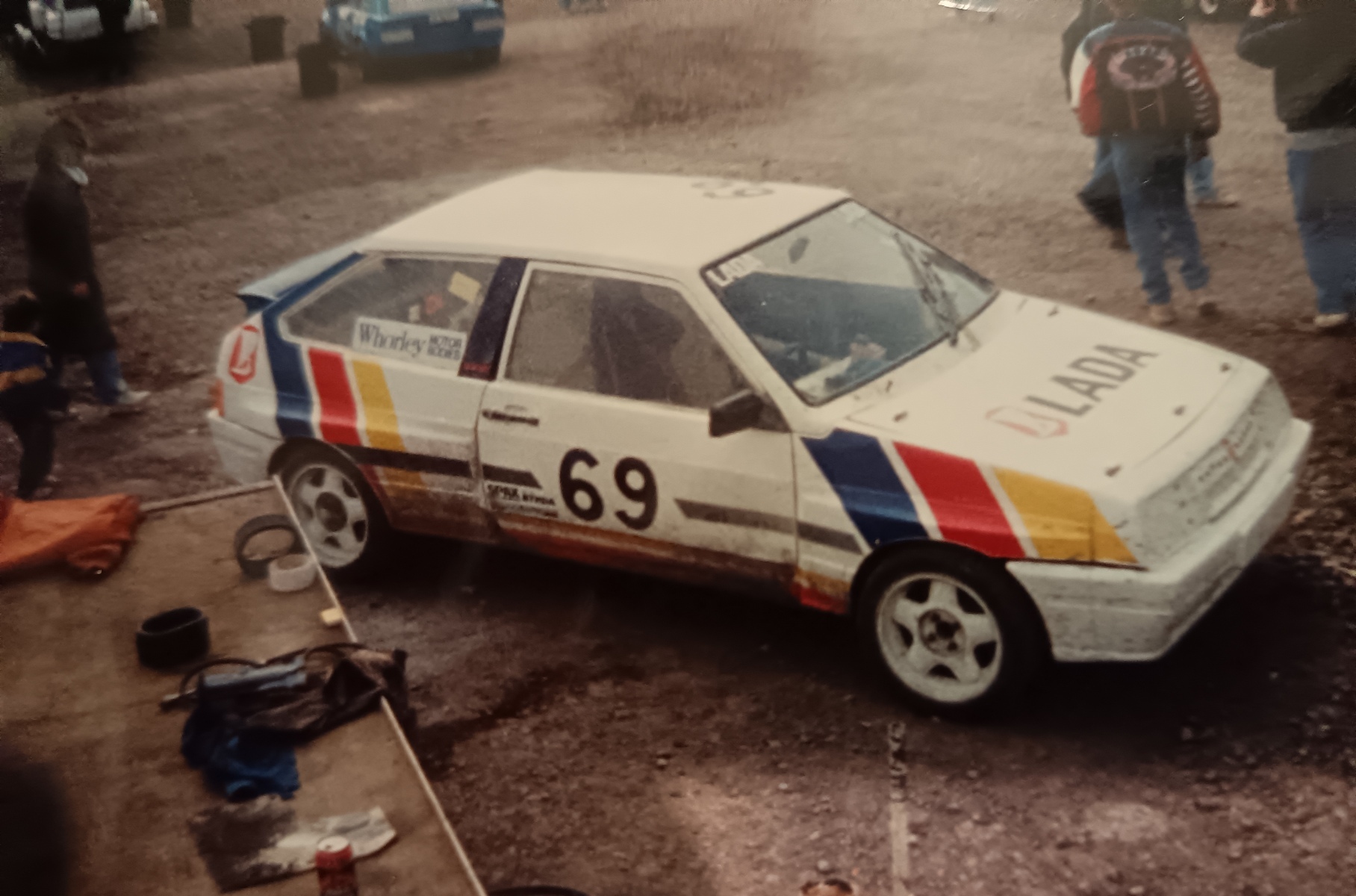 These pretty bumper and a spoiler on the third doors were also placed on the commodity “Samara” – this was done by the Lada Cars UK importer. Such machines were assigned the “1500 SLX” index.
These pretty bumper and a spoiler on the third doors were also placed on the commodity “Samara” – this was done by the Lada Cars UK importer. Such machines were assigned the “1500 SLX” index.
David Playforth Archive
David Playifors recalls: people usually chuckled, having first met Samara in races – the reputation of the VAZs in the UK was so -so. But, seeing her during the races, they usually returned with a lot of questions. And the point was that in one place, cool technical training, a competent team, the Watts racing talent and its ability to protect the car!
Richard Watts has repeatedly won his class, but David especially remembered the episode at the final stage of the championship on the highway in Brand-Hatch: then the racer made his way to the super-final, where he rode the third, sitting on the tail of a powerful Mg Metro 6R4 of the senior category! According to the results of the 2023 season, Watts took the fourth place in the British Rally Cross Championships in the Modified 1600 class. And the next year he moved behind the wheel of a more powerful Vauxhall Nova, which won in his class.
But on this the racing biography of the fast Lada did not end! The Dave Cook Racing Services team prepared the new evolution of the Eight. Now this name has been forgotten, but then this team worked with might and main with the GM Dealer-Vauxhall Sport dealer team: in the 80s, it was preparing for it the Opel Monza compartment and the Vauxhall Nova Hatchback in the Ring Championship BSCC and Vauxhall Carlton in the British series in the British series Thundersaloon, and at the turn of the 80s and 90s-the Vauxhall Astra GTE (Opel Kadett GSI) and Vauxhall Cavalier (Opel Vectra) sedan for the BTCC championship.
By the way, just from the Supertouring class “Samara” received magnificent AP Racing brakes with six -piston calipers. In this car, Richard Watts in 1994 won the title in the club rally-cross series BTRDA. He later moved to a powerful all -wheel drive Ford Escort RS Cosworth … But, it’s nice, his Lada Samara did not sink into oblivion: they say she still stands in his garage!
The novelties of racing equipment will be shown in the framework of the Russian series Rossa LM GT endurance: the most important thing from first -hand racing debuts is 2024
